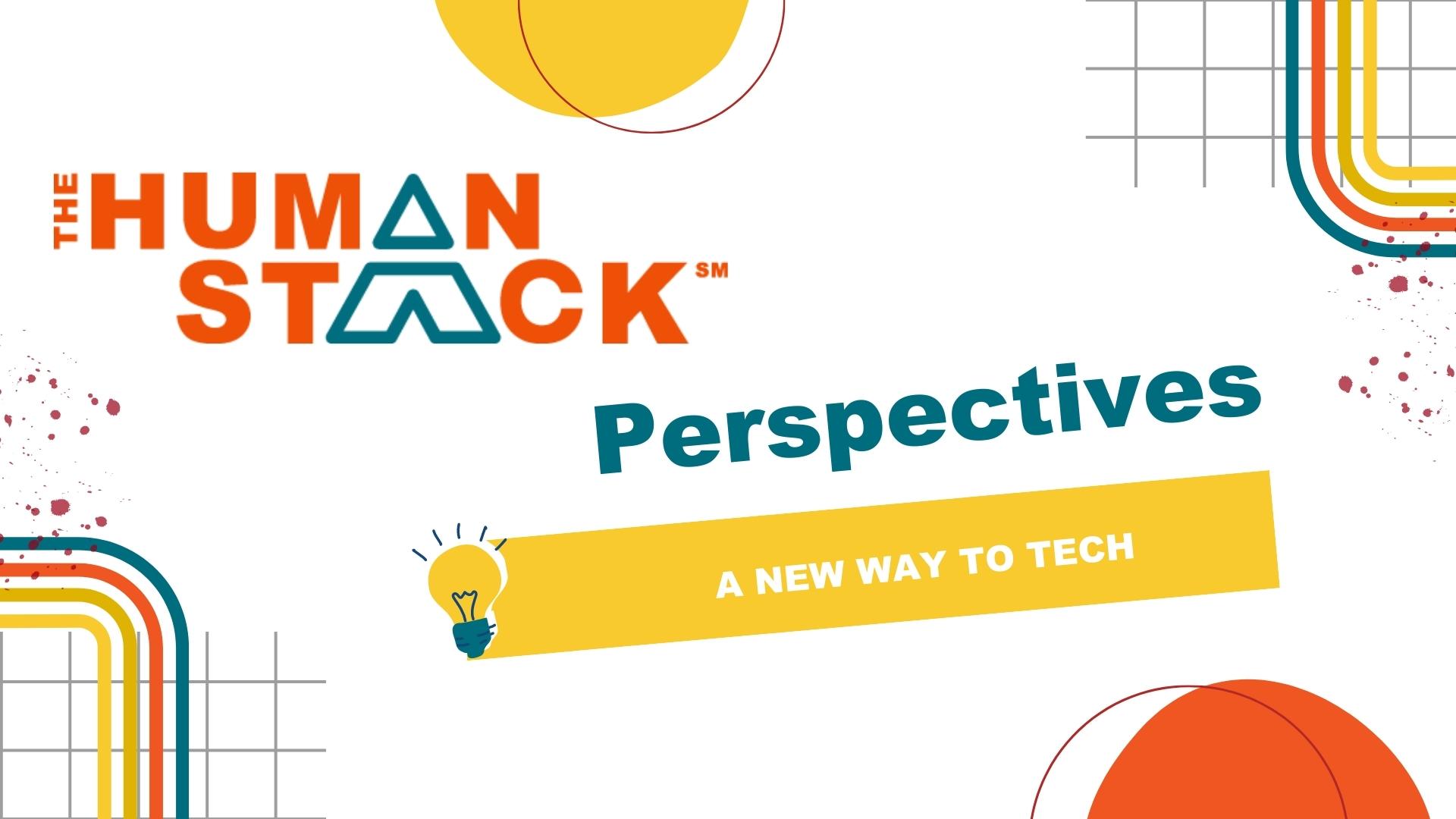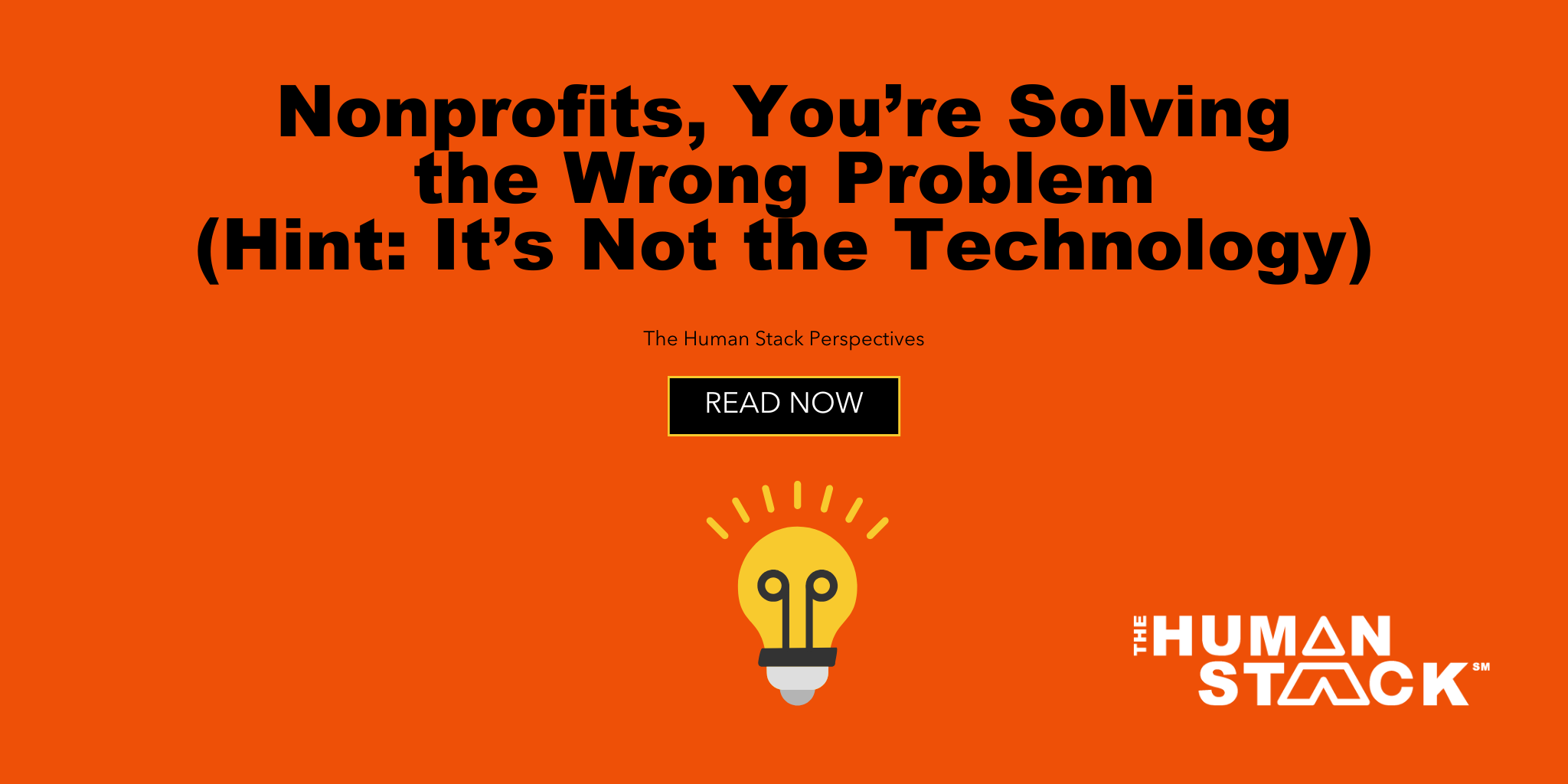5 min read
How to Buy Software That Actually Solves Your Nonprofit's Pain Points
 Tim Lockie
:
February 16, 2021
Tim Lockie
:
February 16, 2021
Technology companies create software products; amazing, almost magical products. But products alone can't create change in organizations, so it's important to not confuse a software product with organizational transformation. Don't expect a product purchase to enable your organization to do something that you weren't already skilled at doing before you purchased it. Think of it like this, a sink company will market great sinks, but they don’t advise on how to build a house. That’s not what they do. They make great sinks. If you want to build a house with sinks, you need an architect. And if you want to know which sink to buy, ask an architect, not a sink company.
We know the people that work for technology platforms. They are dedicated to creating software to serve the needs of nonprofit organizations — fundraising, volunteering, and program management alike. This software is designed to work for the often experienced use cases, but they rely on partners for the last mile (or ten) of customizing and implementing because the software isn't usually effective right out of the box. But you'd never know it from the marketing which makes it seem like Acme Nonprofit used their software and became an overnight impact success! Marketing and messaging showcase the best these tech companies have to offer so it's fine to be inspired, just also be informed. And by the way, you'll need their marketing when it's time to convince your team to go with their product.
Salesforce, Microsoft, Blackbaud, and Netsuite all make products designed to meet the needs of nonprofits, but milage will vary based on the amount of configuration required to meet your specific needs. They should (and do) market the stories which demonstrate the best successes their customers have achieved using their software, but they aren't going to highlight the long path it takes to get there, because the work required to get there isn't their job, it's yours.
So what’s a nonprofit to do? Become informed consumers.
It's your job to understand the market, assess how your organization works without compromising your mission, values, or staff, set a budget for the best-fit technology, and remain clear on the effort required to make it work for you. Is it a challenge? Yes, but it's the right one.
How Nonprofits Can Navigate the Software Sales Pitch
Software vendors are companies with a set of products that help nonprofits increase their impact. To help their customers know what to buy, they have sales teams, with quotas, goals, talk decks... sales stuff. The process of getting software includes sitting through sales pitches with salespeople (who are real people trying to do their best to help nonprofits) and their job is to convince you that their product is what you need. This doesn't make them bad, it makes them salespeople. Now there are some salespeople out there that will be upfront about some of the issues you'll encounter and even some that will occasionally recommend a different vendor - that's the sign of a great salesperson. (And some aren't great or even good, avoid them.)
So when you're in a sales pitch with a salesperson ask questions. What's the pricing model, are there discounts available, when's the best time to buy, what mistakes have other clients made, ask for a list of successful clients, ask how licenses are activated and when they are billed, ask if things go wrong with their product and why. Make a spreadsheet and compare the answers.
Just be aware that software companies are showing you the best and brightest examples of success but they aren't showing you the effort to get it there. And that's not bad because those best and brightest examples are demonstrative of what the software can do, but not necessarily what you can do. Assuming otherwise would be like a business thinking it can get out of the red simply by using QuickBooks.
The Software You Buy Will Affect Nonprofit Operations
Nonprofit operations are partially shaped by the products offered by tech companies. For example, many of today’s nonprofits use a fundraising methodology that they learned from using Blackbaud Raiser's Edge over the past three decades. The software can affect nonprofit operations so it's important to be aware of those effects and to understand where it makes sense to align with that software and where you should configure the software to work your way. Just keep in mind that it's expensive to customize the software, and usually less expensive to use the out-of-the-box features.
Why aren't the products more aligned with nonprofits? Many nonprofits have approached technology companies with their unique needs and ideas to address them through the software, but the needs of nonprofits are unique and the developer resources required to create best-in-class industry-grade software runs into limits. It takes time and dedicated developer resources to understand what nonprofits truly need — and the dedicated resources of large platform companies must compete with other product lines that may be more profitable.
So it's up to you to mitigate future pain points by understanding what you're presently asking for. If you don't understand what your specialized software needs are now, you risk bouncing from vendor to vendor with false glimmers of hope that something will stick. There is a common tendency to make large software changes without first assessing what your organization actually needs from its software. Knowing what you need before you buy is your answer to avoiding the pain-point swap.
Know Thyself: The Homework Before Your Nonprofit’s Next CRM Software Purchase
When it’s time to look into your next software, become an informed consumer and do the homework first. Ask some questions and really get to know what your organization needs to thrive.
Here are a few things to consider:
- Fractured or territorial departments. Do you have territorial departments that may not want to share with other departments? Does the volunteer department use the volunteer software, the fundraising department use the fundraising software, and so on? Territorial cultures create highly siloed software requirements resulting in redundant functionality. A great example of this is texting software. Your major donor officers might want to text with your major donors, so that department bought its own texting software. Your volunteer organizer might want to text volunteers, so that department bought its own texting software. These could be combined, but only if your major donor officers are willing to use the same system? Have the hard internal conversation instead of creating bloated systems.
- Commonalities and priorities. Assess the areas of overlap in terms of your departmental needs. Using the example above, your donor officer and volunteer department may be texting the same people. Do you know if you're reaching the same person twice? Is that part of your strategy or detail that fell through the cracks? There are questions for these departments that an assessment can identify. If you could work a different way, what are your priorities and how important are they to you?
- Technology decision-makers. Before you consider a new platform or investment, create a system that makes sure every stakeholder is accounted for in the decision-making process. Ask the questions: Do we have the right people in the room making the decision? Who's deciding on these investments? Are they leaders who are working on executing the vision? Are they program staff? Who gives input? Know who your decision-makers are and involve them every step of the way.
- Themes in feedback. If you are using a particular platform and hear a chorus of “It doesn't work,” before switching platforms, take a look at the commonalities in that chorus. There may be themes that tell a bigger story. Have you misconfigured the software? Or have your needs evolved and outgrown the software? Does it make sense for multiple departments to use the same software? Finding a common thread can help pinpoint exactly where your needs are.
Certain questions and considerations shed light on the bigger picture. Just because you switch platforms doesn’t mean these issues will go away. Maybe they will, but that's not the point.
The point is to know before you buy.
Expectations Management and Assessing Your Nonprofit’s Software Can Influence Your Future
Technology is increasingly personal. Our expectations of it are tailored to our personal needs and use. Unfortunately, with constraints that nonprofits have, there is rarely the budget, time, or need for everyone to have their personal use considered as part of technology implementations.
Nonprofits (and society) chase a balance between what they want to personalize and the tech available. That balance has grown more off-kilter as technology becomes portable. This has an undeniably negative effect on expectations management. You can’t just buy the shiny new technology and believe it’s going to be the best fit for your organization. Expectation management influences how you search for and buy your software as well.
Even if you had software perfectly tailored to your organization when it was established, odds are your mission — and your staff — have evolved. You experience new pain points with evolution. Assessments and knowing how your organization operates will influence whether you need new software, or whether your current tech can be reconfigured to meet your needs and you can adjust your expectations accordingly.
The bottom line, this is your decision so take the time to understand what the tech companies are selling. Take ownership of your nonprofit’s future investment in software. It all starts with knowing your organization and keeping its mission at the forefront — and not making any sacrifices on your way there.





